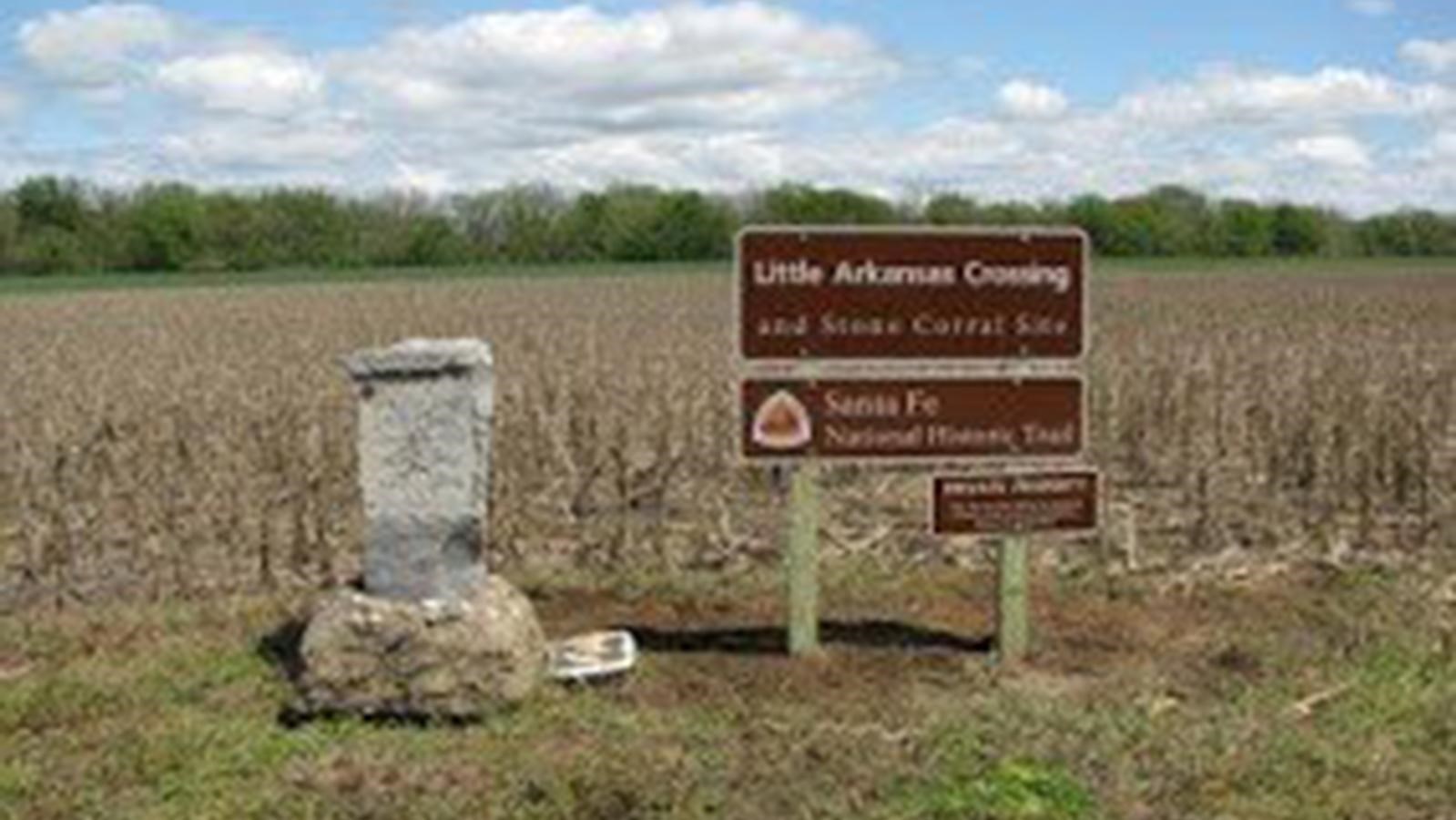Last updated: January 26, 2023
Place
Stone Corral

Photo/NPS
Historical/Interpretive Information/Exhibits
Sometime during 1858, a trading post was established at the Stone Corral. In February of 1859, the Kansas Territorial Legislature passed an act to authorize William T. Williamson and others to build a bridge at the Little Arkansas crossing. The legislature set the toll rates as follows: wagon or vehicle, 50 cents; each large animal, 10 cents, each small animal and person, 5 cents; man and horse, 10 cents. The earliest known somewhat permanent operator of a ranch at the Little Arkansas crossing was William D. Wheeler.
Wheeler, with the help of others, may have built the Stone Corral that existed on the site of his ranch. The original Buffalo Bill, William Mathewson, had a trading post here for a short time. Some believe that the soldiers who occupied the site in 1865 and in 1867 did the work, but there are references to the corral prior to 1865, when troops were first stationed there. The stone used for the construction of the Stone Corral was quarried from an outcropping of rock about one mile west of the Stone Corral location. The corral was described as an excellent example of dry masonry, the walls being so perfectly laid and the sandstone slabs so carefully placed together that little or no light could be seen through any place. There was a small stone room built into one corner of the corral. The walls were about eight feet high and perhaps thirty inches thick. The corral was 300 to 400 feet long east and west, or perhaps northeast to southwest, and about 200 feet wide. The north wall had one or two openings about 10 inches up and down, and two feet long on the inside, tapering to about 10 inches square on the outside. A gateway at the southeast corner of the corral allowed wagons and livestock to enter.
William Wheeler disappeared after May 1864. Prior to 1872, American Indians burned the bridge over the Little Arkansas in an unsuccessful attempt to stop travel on the Santa Fe Trail. Nathan A. C. Bean was the first to officially settle on the Stone Corral site in the 1870's, living in the corral for several months. According to Bean, eight to as many as thirty wagons regularly camped within the walls of the Stone Corral enclosure. Early in the 1870's Mr. Bean began selling stone from the walls of the corral. Some of this was used to build a school house a mile south and three quarters of a mile west of the Stone Corral location. Known as Stone Corral School, the building is still standing though it hasn’t been used in many years. Some of the stone was hauled to Nickerson for the construction of a railway roundhouse. Early settlers in the area used some of the stone to line water wells and build foundations for the homes and farm buildings that were being constructed in the area. Within a few years nearly all the stone was gone and the land was cleared for cultivation.
Site Information
Location (30th Rd., between P Ave. and O Ave., South of Windom, KS)
